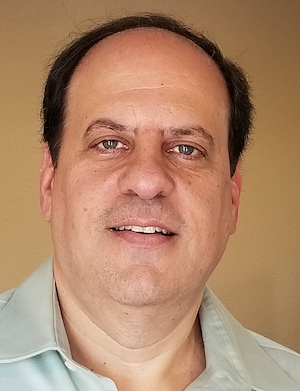 The problem is that hospitals are big and getting bigger, going from building to buildings to campuses. They are expensive and getting more expensive. At some point, we have to ask: is this really how we want to spend our healthcare dollar? Some hospitals are figuring other ways to spend their -- I mean, "our" -- money on our health. Take Nationwide Children's Hospital. Located in a somewhat blighted neighborhood of Columbus (OH), its Healthy Neighborhoods Healthy Families (HNHF) program "treats the neighborhood as the patient," as their summary in Pediatrics put it. The hospital is leading a partnership that has built 58 affordable housing units, renovated 71 homes, given out 158 home improvement projects, and helped spur a 58 unit housing/office development. They've also hired 800 local residents and instituted a jobs training program.
The problem is that hospitals are big and getting bigger, going from building to buildings to campuses. They are expensive and getting more expensive. At some point, we have to ask: is this really how we want to spend our healthcare dollar? Some hospitals are figuring other ways to spend their -- I mean, "our" -- money on our health. Take Nationwide Children's Hospital. Located in a somewhat blighted neighborhood of Columbus (OH), its Healthy Neighborhoods Healthy Families (HNHF) program "treats the neighborhood as the patient," as their summary in Pediatrics put it. The hospital is leading a partnership that has built 58 affordable housing units, renovated 71 homes, given out 158 home improvement projects, and helped spur a 58 unit housing/office development. They've also hired 800 local residents and instituted a jobs training program.
Latest News
The (Awesome) Economics of Open Source
 Successful open source software companies "discover" markets where transaction costs far outweigh all other costs, outcompete the proprietary alternatives for all the good reasons that even the economic nay-sayers already concede (e.g., open source is simply a better development model to create and maintain higher-quality, more rapidly innovative software than the finite limits of proprietary software), and then-and this is the important bit-help clients achieve strategic objectives using open source as a platform for their own innovation. With open source, better/faster/cheaper by itself is available for the low, low price of zero dollars. As an open source company, we don't cry about that. Instead, we look at how open source might create a new inflection point that fundamentally changes the economics of existing markets or how it might create entirely new and more valuable markets.
Successful open source software companies "discover" markets where transaction costs far outweigh all other costs, outcompete the proprietary alternatives for all the good reasons that even the economic nay-sayers already concede (e.g., open source is simply a better development model to create and maintain higher-quality, more rapidly innovative software than the finite limits of proprietary software), and then-and this is the important bit-help clients achieve strategic objectives using open source as a platform for their own innovation. With open source, better/faster/cheaper by itself is available for the low, low price of zero dollars. As an open source company, we don't cry about that. Instead, we look at how open source might create a new inflection point that fundamentally changes the economics of existing markets or how it might create entirely new and more valuable markets.
- Login to post comments
ONC EHR Reporting Program RFI: A Public Health Perspective
 On August 24, 2018, the Office of the National Coordinator for Health Information Technology (ONC) released a Request for Information (RFI) related to the EHR Reporting Program. This RFI is required by the 21st Century Cures Act and its primary purpose is to gather ideas and suggestions related to how ONC might provide better information about Certified EHR Technology (CEHRT). Apparently, the initial intention was to create a "star rating" like the type used in Consumer Reports to use to rate EHRs, but that seems to have been abandoned in favor of some kind of measurement system. But it is far from clear exactly how this would be done.
On August 24, 2018, the Office of the National Coordinator for Health Information Technology (ONC) released a Request for Information (RFI) related to the EHR Reporting Program. This RFI is required by the 21st Century Cures Act and its primary purpose is to gather ideas and suggestions related to how ONC might provide better information about Certified EHR Technology (CEHRT). Apparently, the initial intention was to create a "star rating" like the type used in Consumer Reports to use to rate EHRs, but that seems to have been abandoned in favor of some kind of measurement system. But it is far from clear exactly how this would be done.
- Login to post comments
How to Decide Whether to Open Source Your SaaS Solution
 Should a SaaS provider open source its primary platform, and if so, what is the best way to do it? The decision to open source code requires a fair bit of planning if you want to do it right, especially when it comes to user support and documentation. In the case of SaaS, the required planning is different, although it shares some factors with any open source effort. In my series, How to Make Money from Open Source Platforms, I focused on software that exists solely to be deployed on a computer, whether on a local machine, in a data center, or in a cloud platform (yes, I know the last two are redundant).
Should a SaaS provider open source its primary platform, and if so, what is the best way to do it? The decision to open source code requires a fair bit of planning if you want to do it right, especially when it comes to user support and documentation. In the case of SaaS, the required planning is different, although it shares some factors with any open source effort. In my series, How to Make Money from Open Source Platforms, I focused on software that exists solely to be deployed on a computer, whether on a local machine, in a data center, or in a cloud platform (yes, I know the last two are redundant).
- Login to post comments
CMS Promoting Interoperability Program: A Public Health Perspective
 Well, here we go again. The Centers for Medicare and Medicaid Services (CMS) has now released a new Notice of Proposed Rulemaking (NPRM), titled Medicare Program; Revisions to Payment Policies under the Physician Fee Schedule and Other Revisions to Part B for CY 2019; Medicare Shared Savings Program Requirements; Quality Payment Program; and Medicaid Promoting Interoperability Program...As this NPRM was released, the CMS Administrator, Seema Verma, published an open letter to doctors which is focused on reducing the burden on doctors so they can spend more time with physicians. HL7 has begun a similar initiative on reducing clinical burden. So the key question is: Does this NPRM go far enough to reduce provider burden in the spirit of Dr. Verma's letter?
Well, here we go again. The Centers for Medicare and Medicaid Services (CMS) has now released a new Notice of Proposed Rulemaking (NPRM), titled Medicare Program; Revisions to Payment Policies under the Physician Fee Schedule and Other Revisions to Part B for CY 2019; Medicare Shared Savings Program Requirements; Quality Payment Program; and Medicaid Promoting Interoperability Program...As this NPRM was released, the CMS Administrator, Seema Verma, published an open letter to doctors which is focused on reducing the burden on doctors so they can spend more time with physicians. HL7 has begun a similar initiative on reducing clinical burden. So the key question is: Does this NPRM go far enough to reduce provider burden in the spirit of Dr. Verma's letter?
- Login to post comments
A (Real-World) Tale of 6 Practices and 5 EMRs
 We've all been there. Someone in our family (or ourselves) has a medical concern so schedules a primary care visit, gets some images or lab tests, and perhaps learns that surgery is needed. What starts as a fairly simple process can quickly turn into a near-comedy of inefficiency. My own recent story is typical...I invite you to learn how careMESH can take my above experience and make it all digital. We have exceptional knowledge workers in the healthcare industry and had any of the six medical groups in my story asked for a rating of their service, I would have given every one of them a 5 out of 5. They were all excellent, professional, timely, dedicated people and teams. So, let's empower them to communicate.
We've all been there. Someone in our family (or ourselves) has a medical concern so schedules a primary care visit, gets some images or lab tests, and perhaps learns that surgery is needed. What starts as a fairly simple process can quickly turn into a near-comedy of inefficiency. My own recent story is typical...I invite you to learn how careMESH can take my above experience and make it all digital. We have exceptional knowledge workers in the healthcare industry and had any of the six medical groups in my story asked for a rating of their service, I would have given every one of them a 5 out of 5. They were all excellent, professional, timely, dedicated people and teams. So, let's empower them to communicate.
- Login to post comments
What Burning Man Can Teach Healthcare
 Oh, good: it's Burning Man week. For some people, it's the highlight of the year, an expression of creativity, community, and freedom unlike any other. It's Woodstock, Fashion Week, and the Fringe Festival all rolled together, only set in the Nevada desert. For others, it is 70,000 wannabe hippies/hipsters gathering together for a week of hard partying: public nudity, drugs, and sex, plus burning some "art." Either way, it couldn't possibly have anything to teach healthcare, right? Maybe. But what many do not realize is that Burning Man espouses ten guiding principles, and it is worth taking a look at those and how they could or should be applied to healthcare.
Oh, good: it's Burning Man week. For some people, it's the highlight of the year, an expression of creativity, community, and freedom unlike any other. It's Woodstock, Fashion Week, and the Fringe Festival all rolled together, only set in the Nevada desert. For others, it is 70,000 wannabe hippies/hipsters gathering together for a week of hard partying: public nudity, drugs, and sex, plus burning some "art." Either way, it couldn't possibly have anything to teach healthcare, right? Maybe. But what many do not realize is that Burning Man espouses ten guiding principles, and it is worth taking a look at those and how they could or should be applied to healthcare.
- Login to post comments
Electronic Case Reporting (eCR) Takes Front Stage at PHI2018 Conference
 But the real buzz at the conference seemed to be about electronic case reporting (eCR). This refers to the national effort to replace the current paper and FAX process of submitting reportable conditions from clinical care sites to state and local public health agencies with a more automated electronic process fed from electronic health records (EHRs)...HLN demonstrated the workflow for eCR at the HIMSS18 Interoperability Showcase. However, we did not see a lot of interest on eCR at the HIMSS conference. At PHI2018 we had significant interest, both among public health officials who were anxious to see how they could initiate eCR in their jurisdictions, and other vendor and stakeholder groups who seemed to feel eCR was becoming viable and more “real.”
But the real buzz at the conference seemed to be about electronic case reporting (eCR). This refers to the national effort to replace the current paper and FAX process of submitting reportable conditions from clinical care sites to state and local public health agencies with a more automated electronic process fed from electronic health records (EHRs)...HLN demonstrated the workflow for eCR at the HIMSS18 Interoperability Showcase. However, we did not see a lot of interest on eCR at the HIMSS conference. At PHI2018 we had significant interest, both among public health officials who were anxious to see how they could initiate eCR in their jurisdictions, and other vendor and stakeholder groups who seemed to feel eCR was becoming viable and more “real.”
- Login to post comments
Keeping Patient Data Safe with Open Source Tools
 Healthcare is experiencing a revolution. In a tightly regulated and ancient industry, the use of free and open source software makes it uniquely positioned to see a great deal of progress. I work at a scrappy healthcare startup where cost savings are a top priority. Our primary challenge is how to safely and efficiently manage personally identifying information (PII), like names, addresses, insurance information, etc., and personal health information (PHI), like the reason for a recent clinical visit, under the regulations of the Health Insurance Portability and Accountability Act of 1996, HIPAA, which became mandatory in the United States in 2003.
Healthcare is experiencing a revolution. In a tightly regulated and ancient industry, the use of free and open source software makes it uniquely positioned to see a great deal of progress. I work at a scrappy healthcare startup where cost savings are a top priority. Our primary challenge is how to safely and efficiently manage personally identifying information (PII), like names, addresses, insurance information, etc., and personal health information (PHI), like the reason for a recent clinical visit, under the regulations of the Health Insurance Portability and Accountability Act of 1996, HIPAA, which became mandatory in the United States in 2003.
- Login to post comments
First, We Tear Down All the Hospitals
- Login to post comments
AIRA 2018: Is Open Source the Key to Immunization Software Sustainability?
 On August 14-16, 2018 the American Immunization Registry Association (AIRA) held its 2018 National Meeting. This meeting brought together more than 350 informatics professionals, public health officials, EHR vendors, and other stakeholders who all care passionately about Immunization Information Systems (IIS) and their role in the healthcare community. IIS projects leverage interoperability with EHRs, PHRs, and other systems to promote clinical practice at the point of care; enable public health surveillance, and reduce cost by assisting in preventing both under and over immunization.
On August 14-16, 2018 the American Immunization Registry Association (AIRA) held its 2018 National Meeting. This meeting brought together more than 350 informatics professionals, public health officials, EHR vendors, and other stakeholders who all care passionately about Immunization Information Systems (IIS) and their role in the healthcare community. IIS projects leverage interoperability with EHRs, PHRs, and other systems to promote clinical practice at the point of care; enable public health surveillance, and reduce cost by assisting in preventing both under and over immunization.
- Login to post comments